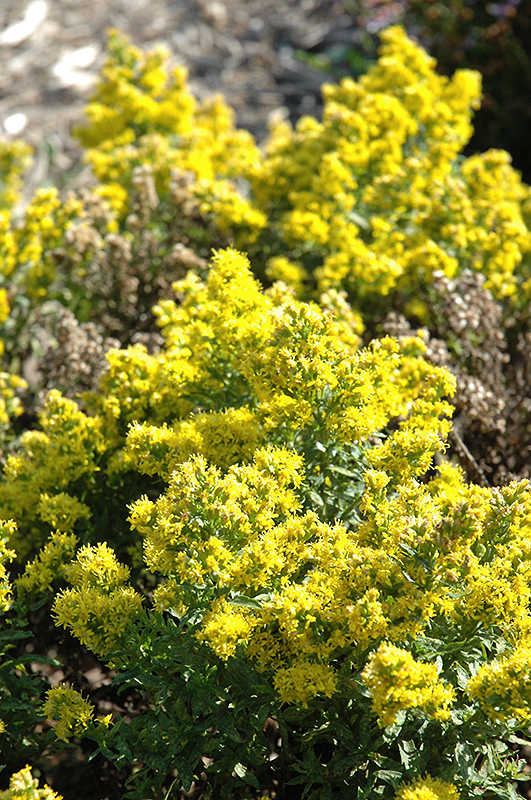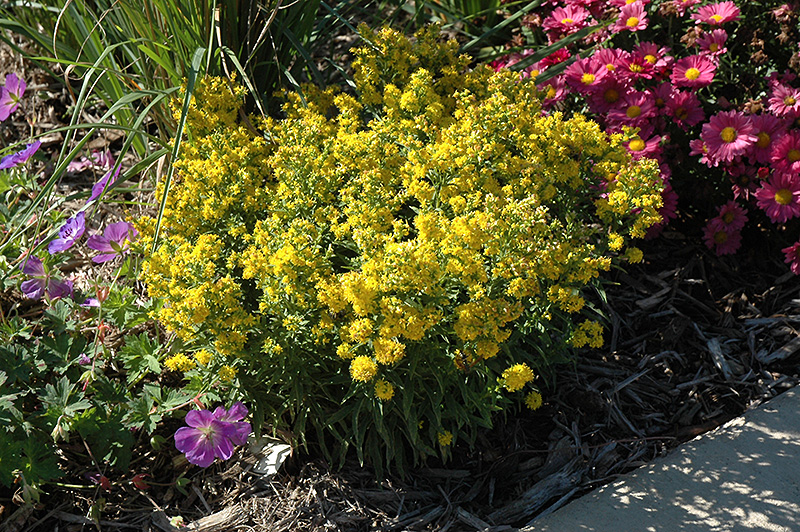PLANT FINDER
Goldrush Goldenrod
Solidago cutleri 'Goldrush'
Height: 15 inches
Spacing: 20 inches
Sunlight:
![]()
![]()
Hardiness Zone: 3a
Ornamental Features
Goldrush Goldenrod is smothered in stunning panicles of gold flowers at the ends of the stems from late summer to mid fall. Its narrow leaves remain green in color throughout the season.
Landscape Attributes
Goldrush Goldenrod is an herbaceous perennial with an upright spreading habit of growth. Its medium texture blends into the garden, but can always be balanced by a couple of finer or coarser plants for an effective composition.
This plant will require occasional maintenance and upkeep, and is best cleaned up in early spring before it resumes active growth for the season. It is a good choice for attracting butterflies to your yard, but is not particularly attractive to deer who tend to leave it alone in favor of tastier treats. Gardeners should be aware of the following characteristic(s) that may warrant special consideration;
- Self-Seeding
Goldrush Goldenrod is recommended for the following landscape applications;
- Mass Planting
- General Garden Use
Planting & Growing
Goldrush Goldenrod will grow to be about 12 inches tall at maturity, with a spread of 24 inches. When grown in masses or used as a bedding plant, individual plants should be spaced approximately 20 inches apart. It grows at a fast rate, and under ideal conditions can be expected to live for approximately 10 years. As an herbaceous perennial, this plant will usually die back to the crown each winter, and will regrow from the base each spring. Be careful not to disturb the crown in late winter when it may not be readily seen!
This plant does best in full sun to partial shade. It prefers to grow in average to moist conditions, and shouldn't be allowed to dry out. It is not particular as to soil type or pH. It is highly tolerant of urban pollution and will even thrive in inner city environments. This is a selection of a native North American species. It can be propagated by division; however, as a cultivated variety, be aware that it may be subject to certain restrictions or prohibitions on propagation.



